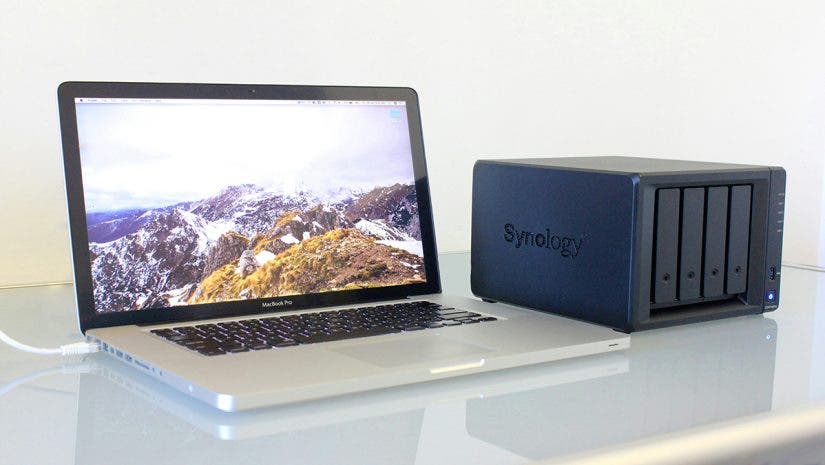As individuals worldwide celebrate World Backup Day, everyone recalls a universal experience. Losing that one file they weren’t supposed to. It’s great to stay safe and secure at a time when not just users are vulnerable, but their precious memories and files, too. It’s even more vital to stay updated with the best devices that help with backup in 2025. Network Attached Storage (NAS) devices are perfect for backup, as they are compact, easy to use, and equipped with top-tier technology.
Keep reading to see a list of the appropriate NAS devices for different uses, followed by the best backup practices!
What is a Network Attached Storage (NAS)?
A Network Attached Storage (NAS) system stores data and is hooked to an online network accessed by authorized users. Cloud storage is shared among an entire group and other necessary users, leading to faster access and less cost.
Normally, a NAS system comes in forms such as external hard drives, built-in routers, desktop devices, and more!
Why is it important?

A NAS network is valuable in this day and age. One of the biggest reasons for its importance is how there is a constant demand for data to be easily stored and accessed. With a NAS device, pictures and videos can easily be stored in an external space for an entire family or workforce to access, creating not just more storage within their devices, but also a centralized network for all users.
So, with a NAS device, you wouldn’t have to wait for your family’s designated photographer to be available to send you pictures and videos from the recent family gathering, which will inevitably take a long time. Instead, you could hop on your family’s shared NAS system and access every precious photo or video quickly and easily.
In the same way, a shared NAS device in a department or office is essential. With such a device, collaboration, and task organization don’t have to come in the form of printed documents or folders anymore. Instead, workers will have to find the appropriate folder uploaded onto the system, and voilà, faster office processes and task completion.
What are the Best NAS Devices in 2025?
Since the demand for NAS systems keeps skyrocketing, NAS devices are rooting to become the preferred choice for consumers. But don’t fret! With this list we have you covered.
WD Red Pro 16TB 3.5″ SATA III: Best for Commercial Use
WD Red Pro drives are built for businesses that mean business. Whether you want to store, share, or collaborate on massive amounts of data, these enterprise-class hard drives are designed to handle the pressure — day and night, 24/7, no excuses.
With NAS-optimized performance, enhanced durability, and shock absorption technology, WD Red Pro keeps your data safe and your workflow smooth, even in high-intensity, multi-user environments.
WD Red Pro top features:
- NAS-optimized with NASware
- Tested for compatibility
- Built-in RV sensors
- Multi-axis shock sensors and dynamic fly height technology
- OptiNAND technology
ASUSTOR Lockerstor 4 Gen 3 AS6804T 4-Bay: Best for Content Creators
ASUSTOR’s Lockerstor Gen3 is a powerhouse of speed, security, and serious storage magic. Powered by an AMD Ryzen Embedded SoC, it zips through tasks with desktop-class performance and energy efficiency. Everything stays smooth, even under heavy workloads.
Also, its ECC RAM ensures your data stays corruption-free, while ASUSTOR’s cutting-edge cooling system keeps the whole thing running at optimal performance. And thanks to MyArchive cold backup technology and Snapshot Center, your precious data is protected from accidental deletions, cyber threats, and other digital disasters.
Finally, with App Central, cloud integrations, and built-in surveillance capabilities, you can stream, sync, and safeguard like a pro.
ASUSTOR Lockerstor Gen3 top features:
- Ultra-fast performance
- ECC RAM & Ryzen power
- Next-level backups
- Comprehensive security with AES-256 encryption
- AI-powered photo management
QNAP TS-264 2-Bay High-Performance Desktop: Best for Media Streaming
Have you been searching for a NAS that can handle your storage, backup, and multimedia needs? The QNAP TS-264 might just be the one, friend. With up to 24TB storage, built-in 2.5GbE networking, and M.2 SSD caching, this feature-packed 2-bay NAS is a multitasking powerhouse.
By the way, it’s more than just a storage box, the TS-264 runs on QTS 5, QNAP’s intuitive and fast OS (or you can switch to QuTS hero for ZFS-powered data integrity). It also doubles as a PC with HDMI output, supports AI-powered photo recognition, and lets you expand to 280TB with an optional storage unit.
QNAP TS-264 top features:
- Up to 24TB – 280TB (upgradable) storage
- Blazing 2.5GbE speeds, upgradeable to dual-port 10GbE
- Intel quad-core CPU + 8GB RAM
- AI-powered image recognition
- One-Touch USB 3.2 Gen 2 backup
Synology DiskStation DS423+: Best for General Use
Synology describes the DiskStation DS423+ as a NAS device that “conquers home office data chaos” and indeed it does!
This compact NAS box can store up to 72 terabytes of data, paired with built-in hardware and software that protects every file. Its centralized portal, the Active Backup Suite, allows users to conduct device backups remotely. Also, restores necessary files that help keep your home or business running smoothly.
Enjoy convenient features such as scheduled backups to external drives, local and remote servers, or even Synology’s very own C2 storage.
Synology DiskStation DS423+ top features:
- Store up to 72TB of data
- 100% data ownership
- Up to 226/224 MB/s sequential read/write
- Built-in file and photo management, data protection, and surveillance solutions
- Capacity: 0TB – Enclosure
QNAP TVS-H1688X: The Best Features in the Market
A powerhouse containing 32GB DDR4 RAM, room for memory expansion of up to 128GB, and built with the advanced Intel Xeon W-1250 6-Core 3.3GHz processor. The QNAP TVS-H1688X is a competitive contender in the industry!
The QNAP TVS-H1688X can keep up with enough data for a company, helping execute demanding and heavy tasks with ease. This NAS device boasts built-in connectivity levels of 10GbE and 2.5GbE and can support Port Turning and failover. Which assists in improving bandwidth to meet any demand that a business could have.
This HDMI-compatible unit runs on a ZFS-based QuTS hero operating system, providing support for block-level inline data deduplication and compression, real-time SnapSync, and read-and-write cache tech.
QNAP TVS-H1688X top features:
- Six cores up to 4.7 GHz with up to 128 GB DDR4 ECC memory
- Thunderbolt 3 + 10Gb Ethernet
- Adobe Premiere Pro and Final Cut Pro collaboration
- Blazing-fast 10GbE/5GbE connectivity for Mac/Windows
- Dual 10GbE connectivity optimizes high-speed data transfer
- Direct 4K HDMI output
- ZFS-based QuTS hero operating system
Synology RackStation RS2423RP+: Best Enterprise Solution
The Synology RackStation RS2423RP+ is a reliable unit for a reason. Primarily for its efficient multi-site synchronization system and Link Aggregation that can bond one 10GbERJ-45 port and two Gigabit RJ-45 ports together, allowing automatic network failover and load balancing.
Users can enjoy an efficient collaboration tool named Synology Drive with this NAS device, which provides access to all the data remotely. Organize, sync, restore, and backup everything, even when you’re out of the office!
Synology RackStation RS2423RP+ top features:
- Over 3,500/1,700 MB/s seq. Read/write
- Built-in 10GbE
- Up to 216TB raw storage before expansion
- Room for 12 extra drive bays,1/10/25GbE ports, and SSD cache volumes
- Backs up 300 endpoints and manages 50 IP cameras
Blackmagic Design Cloud Store Mini: Best NAS for Film & Television Lovers
Are you a movie or show geek looking to keep all your favorites in one spot? The Blackmagic Design Cloud Store Mini might be the NAS device for you. It moves quickly thanks to its low latency, made possible by the parallel processing used by its memory core. It can even handle large 12K RAW files, so you can carry high-quality videos within a compact body!
Within this NAS unit is a high-speed 10G Ethernet (plus 1G Ethernet) connection and four internal M.2 flash memory cards operating in parallel Redundant Array of Independent Disks (RAID) 0 – which tells users that data redundancy is not a concern. With a fast operating system, loads of capacity, and more high-power features, the Blackmagic Design Cloud Store Mini would be a film and TV lover’s dream.
Blackmagic Design Cloud Store Mini top features:
- Portable and Quiet Design
- Flash Memory for Simultaneous Sharing
- USB-C Port
- Free Software for Mac and Windows
- Perfect Multi Camera Video Workflow
- Capacity: 8TB
Synology BeeStation BST150-4T: Best for Your Home
An ideal NAS device for a household is the Synology BeeStation BST150-4T, an easy-to-set-up and small high-capacity unit. Everything is laid out for users by the device’s built-in Neural Processing Unit (NPU) and an AI photo organizer.
Users can store and view 100+ file formats that they’ve added to their Beestation BST150-4T right from their browser and add virtual labels and stars to organize according to special dates, months, or even years. For extra security, homeowners can keep their treasured photos and videos protected with added passwords. Additionally, users can place an expiration date on a shared link to put a limit to who can access the files and when they can be accessed.
Synology BeeStation BST150-4T top features:
- Built-in NPU
- Easy access to BeeStation from any web browser
- AI-powered photo organizer
- 4TB Capacity
WD Red Plus SATA III: Best NAS Hard Drive
Western Digital Red Plus SATA III is an internal NAS hard drive that directly competes with desktop drives, intentionally built for RAID-optimized NAS systems. In such a small body, the WD Red Plus ensures optimal performance and has the right features to protect and preserve the user’s data.
Such features are, among others, its noise and vibration protection and rotation vibration sensors. Engineered to withstand damage, your files are safe, even when you accidentally drop the hard drive or its container. This internal NAS hard drive is also RAID-ready, built with RAID error recovery control to reduce any failure within the multi-bay NAS system.
Secure, compact, and capable. That’s the WD Red Plus 3.5″ SATA III.
Western Digital Red Plus 3.5″ SATA III Hard Drive top features:
- NASware technology
- Designed for systems that operate 24/7
- Extensively tested to ensure compatibility with most NAS enclosures
- For RAID-optimized NAS systems with up to 8 bays
- Plenty of bandwidth for mixed-performance
- Rated for 180TB/year workload and 1M hours MTBF
The Best Practices for Data Backup

After purchasing the best NAS devices and gaining access to amazing software, it’s time to study the best practices for data backup. You can even apply some of these practices to your phone or computer!
The 3-2-1 Backup Strategy
Years of evolving technological needs have brought three critical requirements for every backup routine. These are:
- 3 copies of data (1 primary and 2 backups)
- 2 separate locations to store data copies
- 1 offsite copy
Hence, the name “3-2-1.”
It’s a foolproof approach to a secured backup preparing users for accidents or errors. Following the 3-2-1 backup strategy, accidentally deleting one file of the three copies, losing access to one location, or misplacing your only offsite copy won’t waste all your efforts.
Protect + Encrypt = Safe!

Use encryption technology with an up-to-date algorithm to make sure no one gets into your vault of files. You might have to tap an expert for this one. However, encryption keys are tricky and need to be managed by an expert.
This is especially useful if you have very sensitive or treasured files that if they get into the wrong hands, could mean trouble.
Automate Backups
To avoid any errors, it’s practical to automate backup operations whenever you can. This removes any risk of mistakes during backup procedures, such as forgetting a single step in your backup routine.
If your NAS device or any gadget allows it, organize an automated backup schedule as soon as possible. Make sure you’re only automating the routines that are fixed and consistent, leaving out any operation that firmly requires manual backup.
Follow a Strict Backup Schedule

This practice is like the one where you must automate backups, but not identical. Creating and following a strict backup schedule means automating backups but also keeping track of manual backups consistently.
Some experts suggest that data should be backed up no less than 3 times a day to avoid unwanted data loss. In the world of 1s and 0s where errors are common, it’s best to be safe and consistently back anything up.
Upload, organize, then synchronize regularly.
Promoting Safe and Secure Backups
One wrong click could wash away an entire team’s hard work or a family’s treasured memory, so make sure your files are safe and secure by backing them up.
This World Backup Day and every day, stay agile and smart. Equip your home or office with the best NAS devices and don’t forget to read the manuals carefully!






